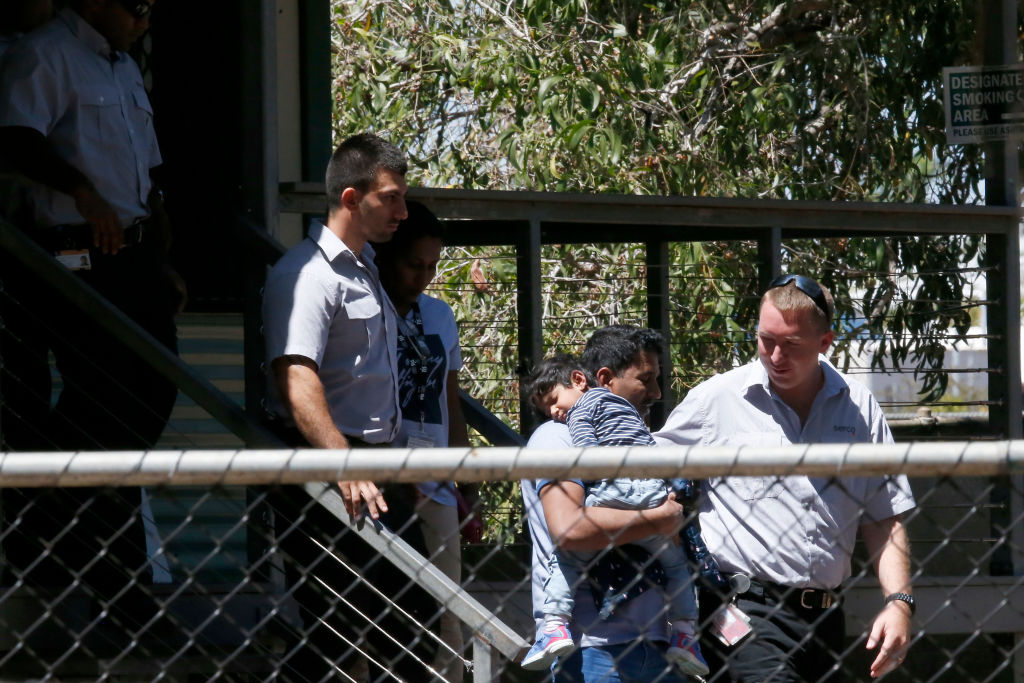It’s time to consider an amnesty for thousands awaiting deportation from Australia

This week, Shadow Home Affairs Minister Kristina Keneally raised concerns that there are now around 50,000 people
awaiting deportation from Australia. All of them arrived by plane and applied for asylum in Australia, but their claims for protection were rejected.
Keneally’s central thesis was that the number of people awaiting deportation has grown so large because the time taken to resolve protection claims is too long, border controls at airports are too open and deportations are not keeping pace with failed claims.
The longer term policy question arising from Keneally’s concerns is how to go about resolving the cases of the tens of thousands of people whose claims have been rejected. To understand the scale of the problem, let’s consider the different categories of legacy cases.
In the second half of 2011, Prime Minister Julia Gillard’s government was under pressure over its policies on irregular maritime arrivals and the growing number of asylum seekers in the country.
With limited options, the government decided that many low-risk irregular maritime arrivals, so-called boat people, would be released into the community on bridging visas. Following health, identity and security checks, they were released, under strict conditions, until such time as their claims for protection were assessed.
In August 2012, in response to an upsurge in boat arrivals and deaths at sea, Gillard re-established offshore processing of asylum seekers. Less than a year later, in July 2013, Gillard’s successor (and predecessor), Kevin Rudd, established offshore resettlement. Those decisions led to the creation of a new cohort of people: the legacy caseload, or those already in Australia awaiting the processing of their claims.
Almost 30,000 people have been sitting in limbo for years on bridging visas which allow them to stay in Australia while awaiting an immigration decision. Without policy intervention, they’ll be waiting for years to come.
The legacy caseload is a political time bomb to which the policy response has been slow. The option of removing families that have grown community connections over several years is heartbreaking for all involved as well as expensive.
Then we have those people who enter Australia on temporary visas but fail to leave when those visas expire. An estimated 86,940 people who entered Australia in 2017–18 breached their visa conditions. Many of those people quickly left the country, but figures from June 2017 show there were
62,900 unlawful non-citizens residing in Australia—a number that has remained roughly constant over the past few years.
Finding publicly available data on how long this cohort of unlawful non-citizens has been in Australia is difficult.
In 2017, the immigration department provided the Joint Standing Committee on Migration with what was then the most recent (correct as at 30 June 2016) data on the issue. This data revealed that more than 50% of unlawful non-citizens had been in Australia for five or more years, and almost 18% had been here for more than 20 years.
Added to this mix are tens of thousands of other people who are still waiting for their refugee claims to be determined.
It’s crucial that the government come up with a policy to prevent any further growth in these numbers. There’s plenty of scope here to argue for long-term investment in integrating Home Affairs’ information systems, including those that process Australian visas, so that anomalous and high-risk visa applications can be better detected. Attention also needs to be paid to developing the risk-modelling and big-data-analytics capabilities that inform visa and border decision-making.
Australia has some of the strongest border security arrangements in the world, aided in no small part by its geographic isolation. The effectiveness of these measures is underpinned by the agility of the bureaucracy in meeting emerging challenges.
Finding a policy solution to Australia’s growing number of legacy cases is not an easy task.
Many of those cases involve people who have become part of their Australian communities over several years. In some cases, new relationships have formed and children have been born. A decision to resolve this challenge by deporting large numbers of people, for example, would have a significant cost in dollar terms as well as in its effects on social cohesion in our communities.
Given the high price and the many years that it would take to clear this legacy caseload, perhaps it’s time for Australia to open its heart further in order to find a solution to this policy challenge.
The government could consider offering a one-time amnesty for all legacy cases in which the applicant has no criminal history and has not had an adverse security assessment made against them. Such an amnesty would offer permanent residency, subject to the passing of a character test, and a path to Australian citizenship.
It would need to be a one-time offer and be accompanied by clear public messaging that no future reprieve would occur.
The removal of Sri Lankan asylum seekers Priya and Nadesalingam, and their Australian-born children Kopika and Tharunicaa, from the Queensland town of Biloela to Christmas Island has clearly illustrated the economic costs and social-cohesion impacts of dogmatic approaches by authorities in cases in which entire families have established roots in Australia.
Imagine the impact on Australia’s social conscience if tens of thousands of similar deportations were to take place, even if they were spread over several years.
Note: The sixth paragraph of this piece was amended at 1220 AEDT on 21 February 2020 to clarify the dates when offshore processing and resettlement of asylum seekers began. Print This Post
Print This Post